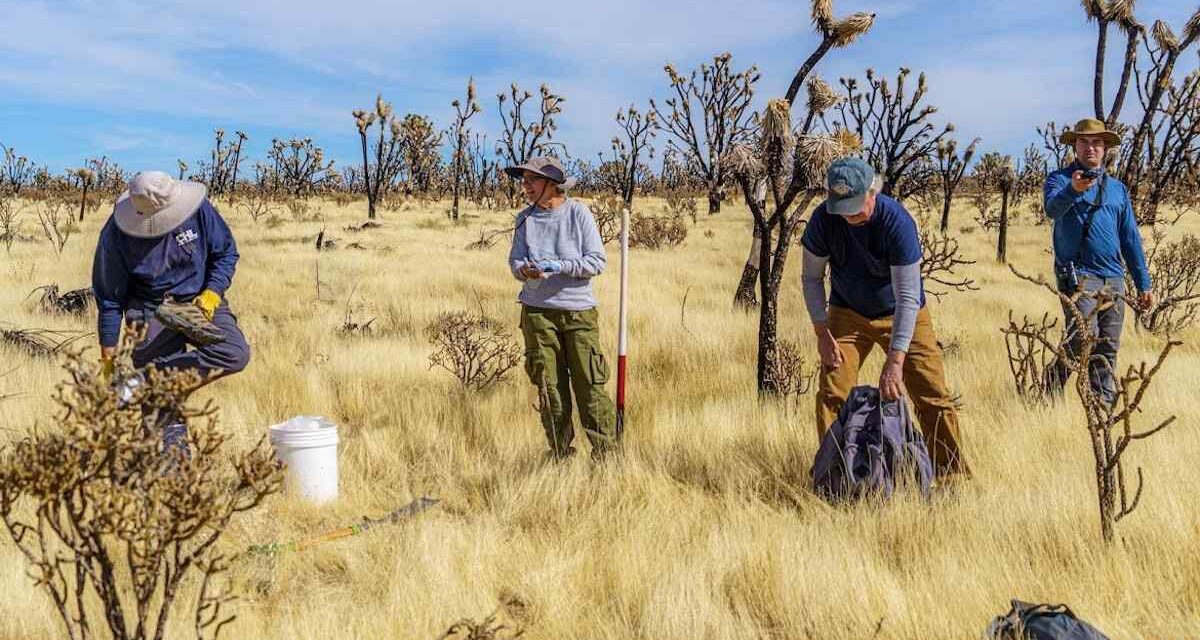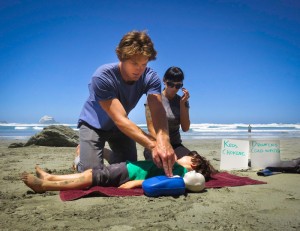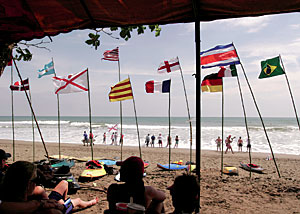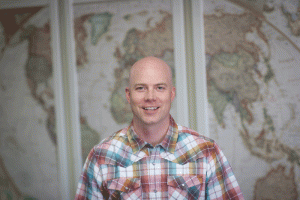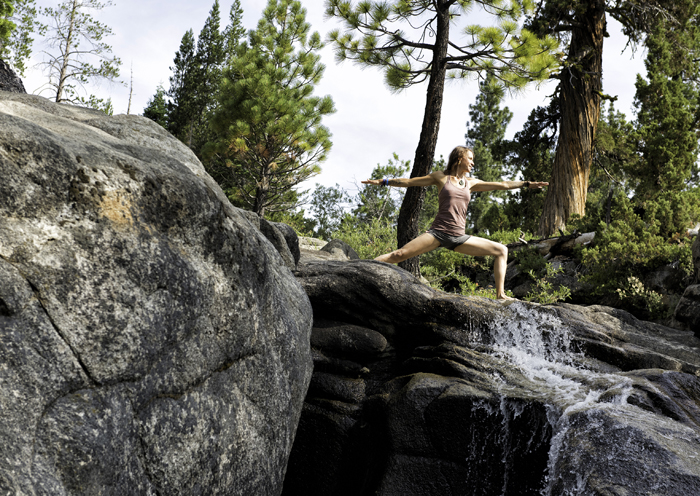- Jerry Meral: Champion of River Conservation for 50 Years - 07/11/2024
- Jerry Ashburn: Adventure Pioneer to Riverside Host - 04/24/2024
- Tulare Lake: Welcome Back Pa’ashi - 09/15/2023
Replanting the next generation of Joshua trees from the ashes of the Cima Fire
They have come from all over to plant Joshua trees. They are doctors, engineers, activists, scientists, writers, conservationists and kids. Some are local from Los Angeles or Palmdale. Others fly in from other states, some as far as Illinois and Wisconsin.
Mojave National Preserve biologist Andrew Kaiser dubbed them “Team Ground Sloth” after the long-extinct mammals that once helped Joshua tree seeds travel by eating and eliminating them. He sees the planting effort as a small way to recreate the sloths’ important role in seed dispersion.
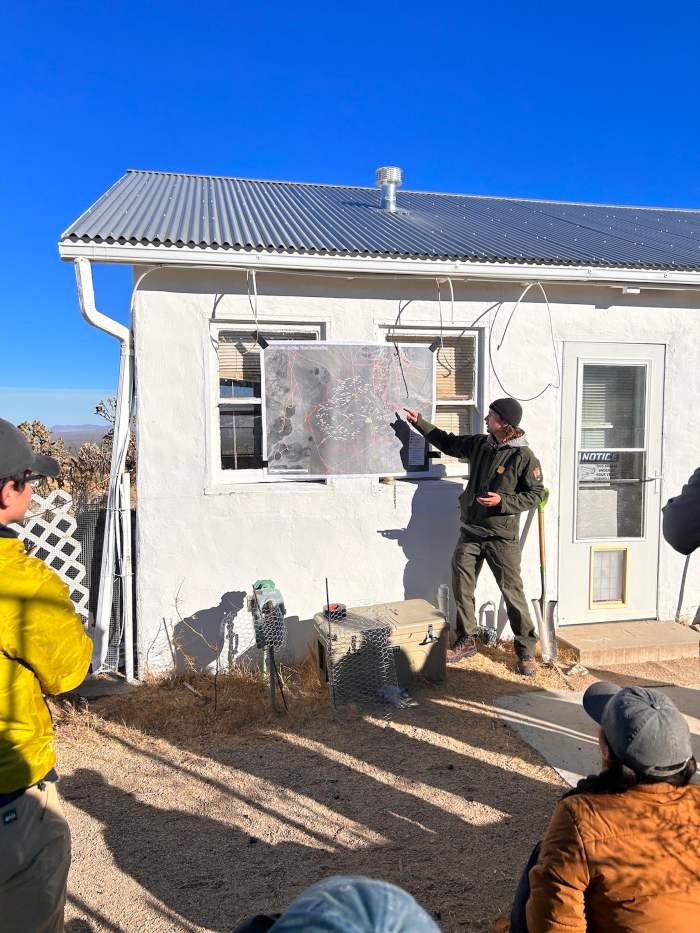
National Park Service staffer Ryan McRae shows a map of planting sites at morning orientation. Photo: Anthea Raymond
The volunteers are planting trees genetically different from the U2-famous ones you find in Joshua Tree National Park, an hour or two drive south.
These eastern Joshua trees are prevalent mostly in Arizona and Nevada as well as the Mojave National Preserve’s Cima Dome where the planting is taking place.
Cima Dome is a volcanically formed rise. It has been identified as part of the best microenvironment for Joshua trees to survive our current climate change. It’s also where in August 2020 the eponymous Cima Fire wildfire destroyed an entire forest of Joshua trees – 1.3 million trees – possibly the densest in the world.
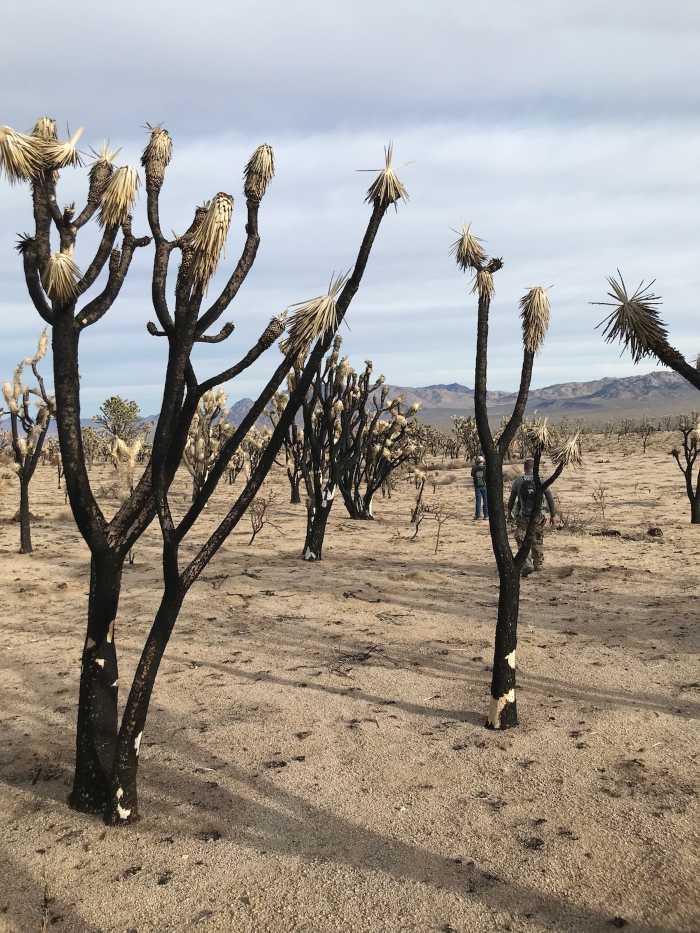
A small slice of the damage from the 2020 Cima Fire. Photo: Anthea Raymond
Two years later, their blackened husks still hang darkly over “the Dome,” though some now have tumbled to the ground. Before the fire, the trees had already been at risk due to climate change, invasive grasses, and lest we forget, the extinction of the ground sloth! But the fire was an ecological disaster that had park officials shaking their heads.
Luckily, however, baby Joshua trees were already growing in a National Park Service (NPS) nursery near Lake Mead. Grown from seeds gathered locally, the seedlings were meant for another restoration project nearby. They instead were rerouted to Cima Dome for two weeks of planting in December 2021. The goal was to get a thousand seedlings in the ground before the winter frost.

One-year-old Joshua trees awaiting their big moment. Photo: Anthea Raymond
The volunteers who gathered at Valley View Ranch in December 2021 planted the seedlings in four different ways. Some were protected in chicken wire enclosures or “cages,” some were not. Some relied on the succor of a so-called “nurse plant” – usually a tiny cholla cactus showing some sign of life after the fire. Every planting was photographed and its GPS coordinates were recorded. Volunteers even gave a few names. Some locations were easy to reach, others were several miles off dirt roads navigable only by 4x4s.
The cages protect delicious baby plants from being eaten by rodents and other predators, but are considered permanent structures generally prohibited in federal wilderness areas. Year one of the planting was in part a test to see whether cages were the “minimum necessary tool” for the plants to survive, avoiding that restriction.
It was cold in the Mojave and after five days rain and sleet halted the planting, set to last for two weeks. Volunteers returned in April 2022 to complete planting the initial thousand seedlings of the four year cycle.
Months later, after several visits, the biologists saw that caged plants did better. So for round two in November 2022, all the seedlings were caged, though not all had a nurse plant. Park biologists and technicians will again visit the plants over the course of the year to see how they are doing, much as they did with the 2021 crop. It had a just under a one in five survival rate, considered a success.
Making their rounds, the biologists also noticed unexpected signs of life in the burned forest. Nourished by summer monsoon rains, new growth at both the bases of burned trees and on their branches was evident. It meant the forest hadn’t been completely destroyed. It also meant better conditions for the baby trees too.
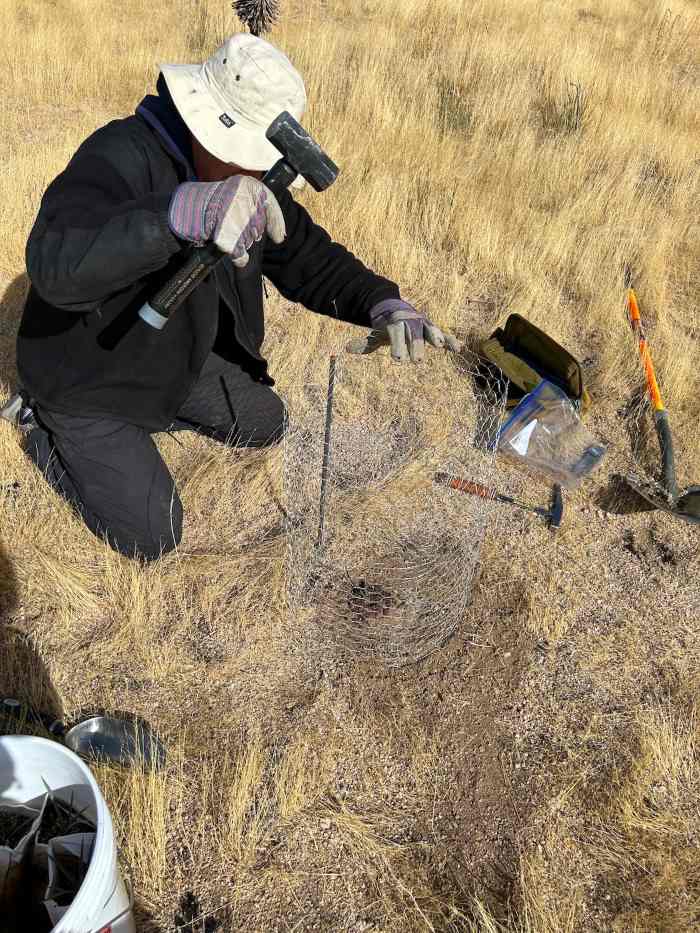
A volunteer stakes chicken-wire cage around a newly planted seedling. Photo: Anthea Raymond
Joshua trees have long lives. Some of those that burned were over a hundred years old. And the babies don’t produce seeds for a decade, or flowers for at least two. So it will be a while before the volunteers will truly see the fruits of their efforts. But for many, some of whom have spent many days at the project, it’s also a chance to make a difference in a very hands-on way.
According to Erin Knight, a biological technician staffing the planting project, “The preserve is a very beautiful place and it’s pristine in a lot of ways that you won’t really see in other settings. We are looking for conscientious people who also want to experience that.”
The Preserve will host a group campout and watering day in April 2023. NPS employees will lead a day of watering the existing two years of plantings. And the third round of planting is slated for a few weeks in October 2023.
To get more information and to join the project mailing list, email Erin Knight (erin_knight@nps.gov). The Preserve also maintains an Instagram @mojavenps and a web page with more details about the physical requirements of the work at:
www.nps.gov/moja/getinvolved/cima-dome-joshua-tree-forest-restoration
***
Main image: “Team Ground Sloth” volunteers can hike up to three miles carrying seedlings to their planting sites. Photo: Mike Kelzenberg
Read other articles by Anthea Raymond here.

